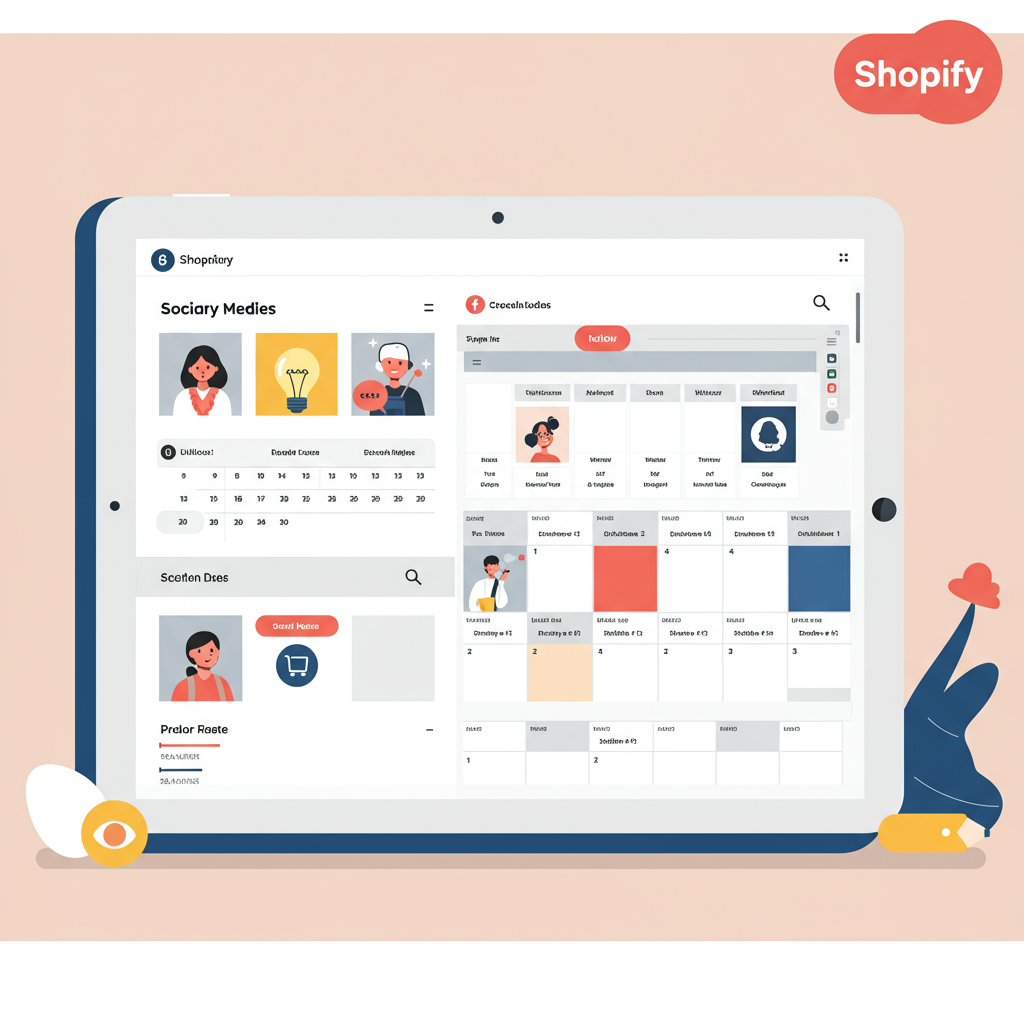Transforming Your Online Presence from Chaos to Conversion
Hey there, fellow Shopify merchant! I know firsthand how exhilarating, yet sometimes overwhelming, running an e-commerce store can be. We juggle product development, inventory, customer service, and, of course, marketing.
Among all the marketing avenues, social media stands out as a powerhouse for connecting with your audience and driving sales. But let’s be honest, keeping up with multiple platforms, creating engaging content, and posting consistently can feel like a full-time job in itself.
That’s where a robust social media marketing calendar comes into play. It’s not just a fancy spreadsheet; it’s your strategic roadmap to social media success, ensuring you never miss a beat or a potential sale.
I’ve seen many merchants struggle with sporadic posting or last-minute content creation, leading to burnout and ineffective campaigns. A calendar eliminates this chaos, transforming your social media efforts from reactive to proactive.
So, why exactly do *you* need one for your Shopify store? First, it ensures consistency. Regular, high-quality posts keep your brand top-of-mind and build audience loyalty.
Second, it allows for strategic planning. You can align your social media content with product launches, seasonal promotions, holidays, and even broader marketing campaigns.
Third, it boosts efficiency. No more scrambling for ideas! With a calendar, you know exactly what to post, when, and where, saving you precious time.
Fourth, it facilitates tracking and analysis. By planning your content, you can easily see what performed well and what didn’t, allowing you to refine your strategy over time.
Finally, it helps prevent content fatigue and burnout. When you plan ahead, you can batch content creation, making the process much more manageable and enjoyable.
Now, let’s dive into the nitty-gritty: what should your Shopify social media marketing calendar include? I recommend a comprehensive approach.
At a minimum, each entry should have: the Date, the Social Media Platform (e.g., Instagram, Facebook, TikTok, Pinterest), the Content Type (e.g., image, video, Reel, Story, carousel, live), and the specific Topic or Theme.
Beyond these basics, I always include a placeholder for the Caption/Copy, a description of the Visuals needed (e.g., product shot, lifestyle image, infographic), and the relevant Links (e.g., direct product page, collection page, blog post).
Don’t forget the Hashtags! These are crucial for discoverability. I also add a Call to Action (CTA) and a Status column (e.g., Draft, Ready for Review, Scheduled, Posted).
So, how do you go about creating this powerful tool? Let me walk you through my process.
**Step 1: Define Your Goals.** Before you post anything, ask yourself: What do I want to achieve? Is it increased website traffic, higher conversion rates, brand awareness, or customer engagement? Your goals will shape your content.
**Step 2: Identify Your Target Audience & Platforms.** Where does your ideal customer hang out online? Focus your efforts on the platforms where they are most active. Don’t try to be everywhere at once if your resources are limited.
**Step 3: Brainstorm Content Pillars/Themes.** This is where the creativity flows! Think about recurring themes relevant to your Shopify store.
For example, you might have pillars like: Product Spotlights, Behind-the-Scenes, Customer Testimonials, Educational Content (how-tos, tips), Seasonal Promotions, Holiday Campaigns, User-Generated Content (UGC), and Community Engagement.
**Step 4: Choose Your Tool.** You don’t need expensive software to start. A simple Google Sheet or Excel spreadsheet works wonders. For more visual planners, tools like Trello or Asana can be great. Dedicated social media management tools like Later, Hootsuite, or Buffer offer scheduling capabilities too.
**Step 5: Populate Your Calendar.** Start by mapping out key dates: product launches, sales events, national holidays, and relevant industry events. Then, fill in your content pillars around these dates.
I usually plan monthly, then break it down weekly, and finally daily. This allows for both long-term strategy and agile adjustments.
**Step 6: Create and Schedule Your Content.** Once your calendar is populated, it’s time to create the actual posts. Write compelling captions, design eye-catching visuals, and gather your links.
Many social media platforms now offer native scheduling, or you can use third-party tools that integrate directly with your Shopify store to pull product information.
**Step 7: Analyze and Adapt.** This is perhaps the most critical step. Once your content is out there, monitor its performance. Which posts generated the most engagement? Which drove the most traffic to your Shopify store?
Use insights from your Shopify analytics and social media platform insights to understand what resonates with your audience. Don’t be afraid to tweak your strategy based on data.
A pro tip for Shopify merchants: leverage your product feed! Many social media platforms allow you to create dynamic ads or shoppable posts directly from your Shopify product catalog, making it incredibly easy to showcase your offerings.
Also, consider integrating social proof. Encourage customers to share photos of your products and then ask for permission to repost their content. This builds trust and provides authentic content for your calendar.
Remember, your social media calendar is a living document. It should evolve as your business grows and as social media trends change. Stay curious, experiment, and engage with your community.
What do you think about this approach to social media planning? I’d love to hear your thoughts and any strategies you’ve found successful!
By investing a little time upfront to create and maintain a social media marketing calendar, you’ll transform your online presence from a chaotic chore into a powerful, streamlined sales engine for your Shopify store.
It’s about working smarter, not harder, and ensuring every post contributes to your overall business goals.
So, go ahead, start building your calendar today. Your future self (and your sales figures) will thank you!






